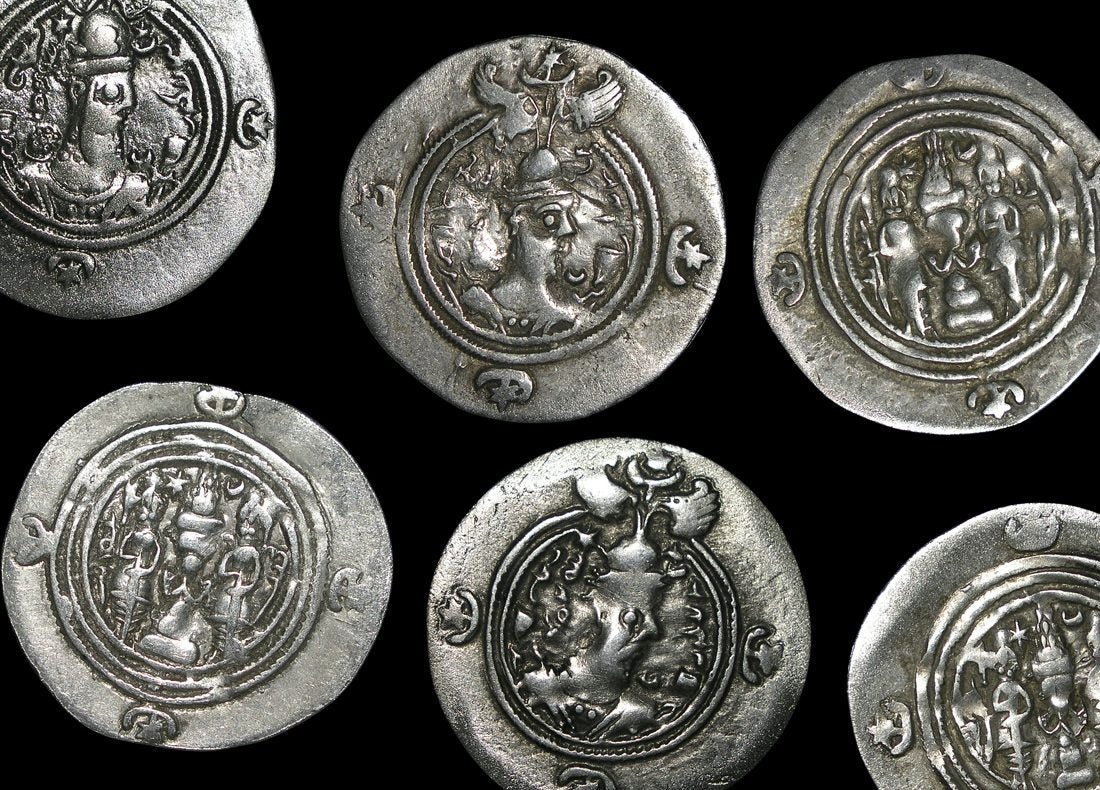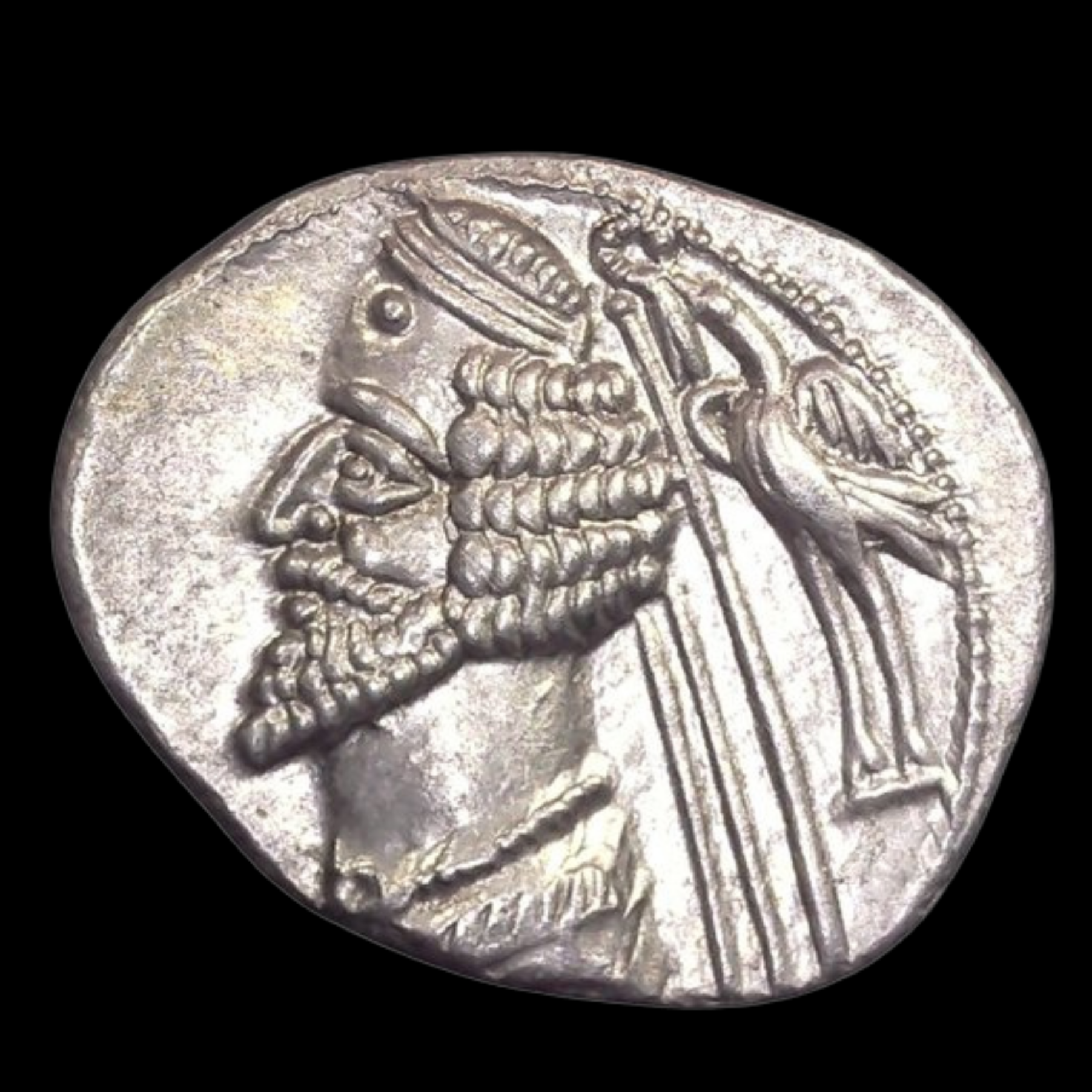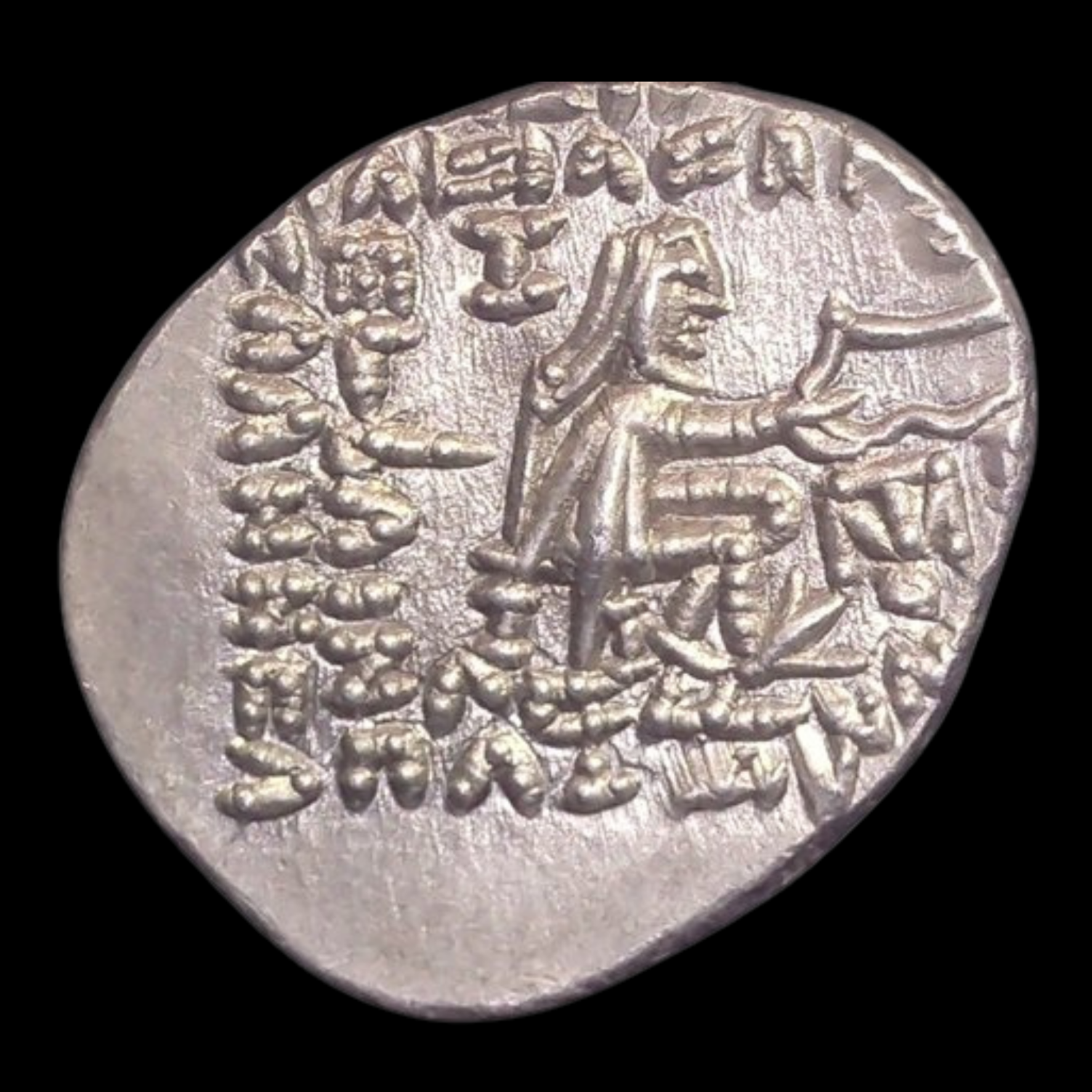 Image 1 of 1
Image 1 of 1


Sasanian Empire Silver Dirham of Khusrau II (about 1,435-1,400 years ago)
This silver dirham was issued during the reign of Khusrau II, one of the last powerful monarchs of the Sasanian Empire before the rise of Islam. Minted throughout the Persian Empire (centered in modern Iran), this coin represents the final decades of Zoroastrian Persian civilization and its complex relationship with the neighboring Byzantine Empire.
Coin Description:
Front side: Features a rightward-facing bust of Khusrau II wearing an elaborate crown with wings and ornamentation unique to his reign. His beard is styled in the distinctive royal Persian fashion, and the portrait is surrounded by Pahlavi script giving his name and titles.
Back side: Depicts the traditional Zoroastrian fire altar with attendants on either side, possibly with specific symbols relating to Khusrau II's reign. Additional Pahlavi inscriptions include the mint location and regnal year.
Technical Details:
Material: Silver
Denomination: Dirham (standard silver unit in the Sasanian monetary system)
Minting date/period: 591-628 CE (approximately 1,435-1,400 years ago)
Condition: Varies by specimen
Historical Significance:
This coin was issued during the tumultuous reign of Khusrau II, whose military campaigns brought the Sasanian Empire to its greatest territorial extent. After his Byzantine ally Emperor Maurice was assassinated in 602 CE, Khusrau launched a war of revenge that initially succeeded in conquering much of the eastern Byzantine territories, including Egypt, Syria, and even threatening Constantinople itself. However, Byzantine Emperor Heraclius eventually counter-attacked, and Khusrau was assassinated in a palace coup, leading to a succession crisis that fatally weakened the empire just before the Islamic conquests.
This silver dirham was issued during the reign of Khusrau II, one of the last powerful monarchs of the Sasanian Empire before the rise of Islam. Minted throughout the Persian Empire (centered in modern Iran), this coin represents the final decades of Zoroastrian Persian civilization and its complex relationship with the neighboring Byzantine Empire.
Coin Description:
Front side: Features a rightward-facing bust of Khusrau II wearing an elaborate crown with wings and ornamentation unique to his reign. His beard is styled in the distinctive royal Persian fashion, and the portrait is surrounded by Pahlavi script giving his name and titles.
Back side: Depicts the traditional Zoroastrian fire altar with attendants on either side, possibly with specific symbols relating to Khusrau II's reign. Additional Pahlavi inscriptions include the mint location and regnal year.
Technical Details:
Material: Silver
Denomination: Dirham (standard silver unit in the Sasanian monetary system)
Minting date/period: 591-628 CE (approximately 1,435-1,400 years ago)
Condition: Varies by specimen
Historical Significance:
This coin was issued during the tumultuous reign of Khusrau II, whose military campaigns brought the Sasanian Empire to its greatest territorial extent. After his Byzantine ally Emperor Maurice was assassinated in 602 CE, Khusrau launched a war of revenge that initially succeeded in conquering much of the eastern Byzantine territories, including Egypt, Syria, and even threatening Constantinople itself. However, Byzantine Emperor Heraclius eventually counter-attacked, and Khusrau was assassinated in a palace coup, leading to a succession crisis that fatally weakened the empire just before the Islamic conquests.
















